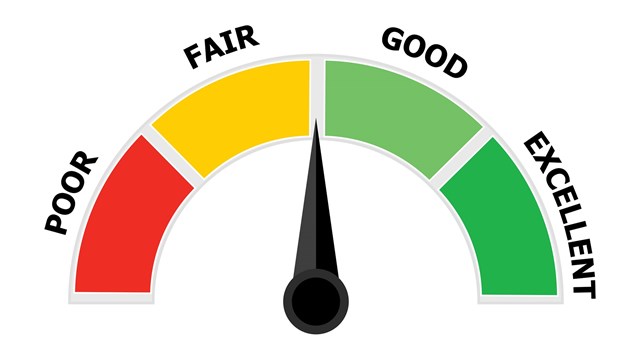In these times of economic uncertainty, nothing is more important than planning for a rainy day, especially when that rainy day might involve repairs to multimillion dollar buildings. That is one of the many reasons why having an adequate reserve fund is so integral to the fiscal health of any condominium or co-op community. While it seems like a monumental task to get a detailed analysis of how much money needs to be saved each year to pay for boiler repairs or façade replacements five, ten or even 30 years down the road, the ability to plan far in advance can prevent a lot of problems for boards and residents alike.
Planning for Tomorrow
“A reserve fund is really a financial planning tool,” says Mark Waldman, president and principal engineer of Waldman Engineering Consultants Inc. based in Naperville. ”It’s a road map to help people understand how much they need to be saving today to make repairs and replacements for common elements. It’s really a capital needs assessment with a financial element.”
The analogy, Waldman says, is akin to a bathtub. “The reserve fund is like the bathtub, and the fund level is the water in that tub. Future expenses are the drain. The opening of the drain is how much the needs are. The goal is to always have water in the tub, despite however many repairs and replacements are being done.”
The goal, too, is to ensure that the reserve study looks as far into the future as possible. “The length you should plan for is 30 years,” says Kevin Bobb, owner, president and founder of Building Reserves, based in Milwaukee, Wisconsin. “The main reason is that the major components of a building are the roof, siding, HVAC systems and sealants for high-rises. If you look at the useful life of those components, they’re 20 to 30 years if the building was new. You wouldn’t have very high expenses in years zero through 15 but for years 20 to 30 you will have very high expenditures.” And the key is to plan for those expenses so the residents of two decades from now are not stuck with unreasonable and perhaps unsustainable assessments and unplanned costs.
Save, Save and Save Some More
While planning is certainly of the utmost importance, it is also imperative to ensure that the studies’ findings are adhered to and an adequate amount of money is always on hand in the reserve fund. “Having adequate funds in reserves serves a number of different important purposes,” says Patrick Kennelly, CEO of the Chicago-based Phoenix Rising Management Group, Ltd. “First and foremost is ensuring that future capital repair requirements can be properly addressed. Typically, if funds are not available, the board has a tendency to defer on necessary repair or replacement requirements. If the reserves are properly funded, it is much more likely the necessary work can be completed in a timely manner. Failing to properly maintain major mechanical systems will decrease the useful life of the system and open the association up to a major systems failure.”
And what happens when that level of mechanical or structural failure occurs? “When a major system fails and creates an emergency repair situation, it is unlikely the board will have the time to exercise their due diligence and be able to competitively bid the work and ensure the vendors are properly vetted,” Kennelly says.
Second—and perhaps first on the minds of most residents and shareholders—is the fact that not having enough cash on hand can be costly for the co-op or condo association, in more ways than one.
“Adequate reserves enables the association to avoid a special assessment,” Kennelly says. “When management and the board do not properly plan for future repair and replacement costs, the only other option available, short of deferring on the work, is to levy a special assessment or take out a loan. In the latter case, any reputable lending institution is likely going to require that a special assessment accompany any loan so the entire project is not 100 percent financed.” And that is not going to sit well with any unit owner or shareholder who had trusted in management and the board to be planning for the future.
Third, having a sufficient reserve fund is reassuring to potential buyers—something of special importance in buildings or communities that may have seen a decline in ownership during the recession. “In a competitive real estate market, adequate reserves give a potential buyer the peace of mind that the board is meeting its fiduciary responsibility,” Kennelly says. “Potential buyers are becoming more savvy. We are seeing more and more buyers heavily weighing the strength of the reserves and a well-documented repair schedule as key factors in their decision criteria when comparing potential unit purchases.”
Doing it Right
The first step to planning well for the future is to make sure that the initial and all subsequent reserve studies are thorough and conducted by skilled experts. “It is important that whoever conducts the study understands how buildings work and how to quantify components,” says Bobb. He suggests using reserve specialists, accredited professionals who are also mechanical engineers or architects. Because of their experience in designing and constructing buildings, architects are better able to review blueprints and understand components such as roofing or asphalt and at the same time, have the experience and trained eye to evaluate those estimates on the ground—literally while walking through that asphalt parking lot or treading carefully on rooftops.
Reserve studies are comprised of two basic parts, says Waldman. There is part one, “which is an inventory of common elements,” he explains. The reserve specialist will meet with the property’s manager or someone else extremely familiar with the community and examine a laundry list of needs. “The list would be a long one for a high-rise,” says Waldman, “but it could be very short for a suburban development, which might just be paving, retention ponds and fencing.” The reserve study team will then go out and physically examine the common elements, assess their condition and then estimate the useful life of each component. Some associations will also have an initial meeting with the team of specialists to ensure that their list and the reserve study list matches, helping to clarify a retaining wall that may actually belong to a neighboring property—something a team of hired specialists may not realize without proper guidance from the board or management.
Part two of the study is analysis and calculations. “The present day replacement cost is quantified and then a forecast is made of what those costs will be,” Waldman says. “It’s a computation of future costs.” These assessments are based on assumed inflation rates and rate of return of the reserve fund. It’s these numbers that determine if a community should be saving $50,000 or $500,000 a year.
Most reserve study firms will offer at least two funding plans to meet the needs of the association, Waldman says. “It depends, too, on what they already have on hand in reserves—$500 or a million.” This is also the point at which some associations will decide how they want to pay for these future costs. “Some associations will ask us to leave out pavement, for example, because they may choose to finance that or do it with a special assessment,” says Waldman.
Better Safe Than Sorry
Once a reserve study is in place, it is vital to keep it updated on a regular basis. “(It’s important) especially now when we have a very unstable economic environment,” says Bobb. Decreased purchasing power, for example, can throw off reserve study estimates. Or “building commodities like wood and oil going up and fluctuating” can affect the long-term accuracy of the study, says Bobb.
Up-to-date studies are imperative, too, for buildings that may want to borrow money at a later date. “Banks are less likely to loan if they can’t see liability of capital expenses on paper and the only way to do that is through a reserve study,” Bobb says.
Reserve studies should be updated “every three to five years at least,” says Waldman. “In all honesty, a reserve study captures what we know about but I can guarantee there are always surprises.”
Keeping up with repairs also helps to ensure that no major surprises are lurking down the road. “Finally, management should utilize the reserve study to build a working repair schedule that ties back to an operations schedule and the association’s budget,” says Kennelly. “An integrated system linking the reserve study, operations and the budget, best ensures that the board has all the necessary information to make informed decisions and properly plan for the future financial needs of the association. A well thought out reserve study is critical to setting up a realistic repair schedule.”
When it comes to our communities and homes, financial surprises are rarely welcomed. Getting a comprehensive reserve study, updating it on a regular basis and keeping it at the level it requires will ensure that those unhappy and unexpected financial bumps in the road are few and very far between—something all homeowners can appreciate.
Liz Lent is a freelance writer and a frequent contributor to The Chicagoland Cooperator.










Leave a Comment